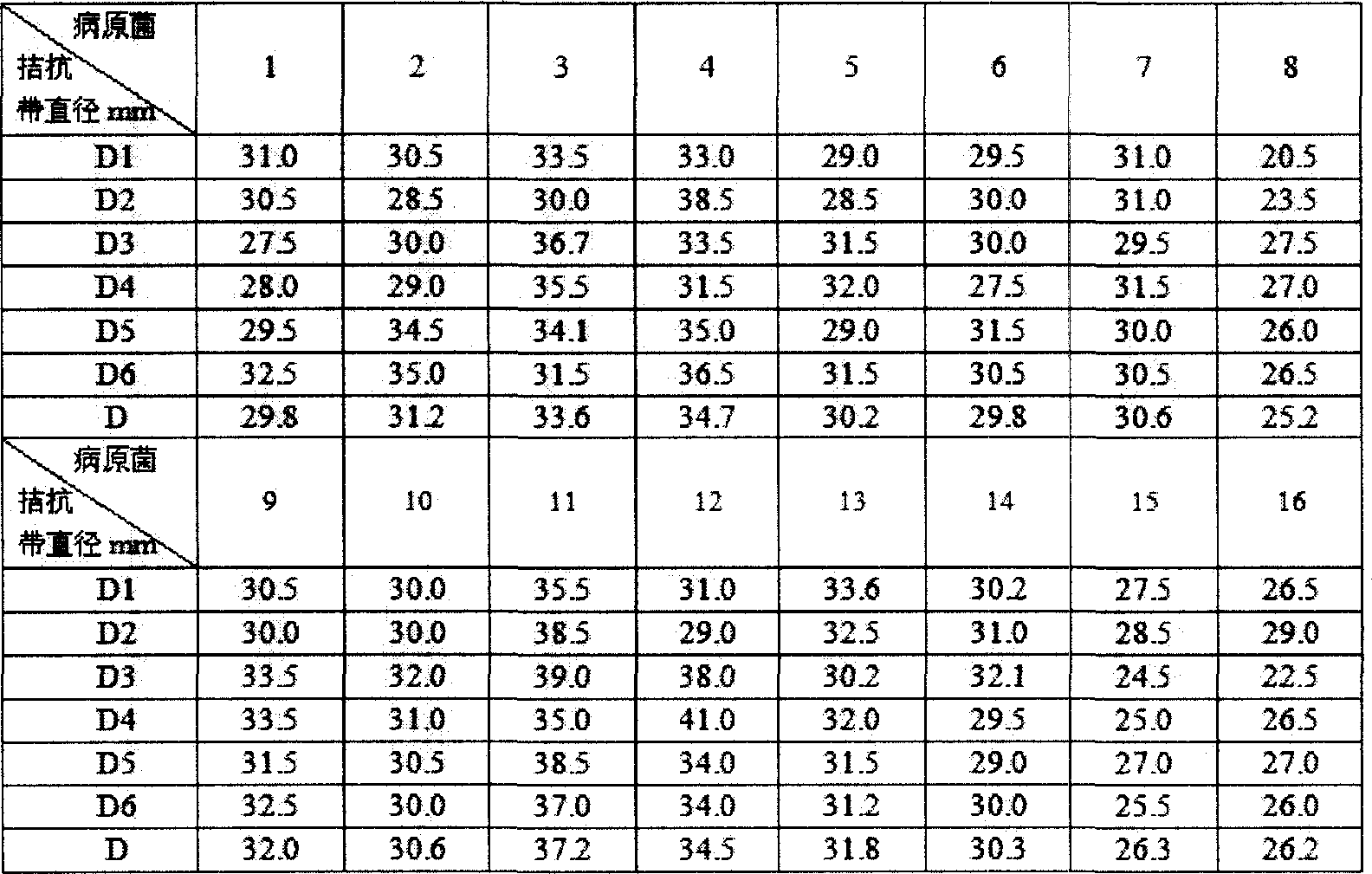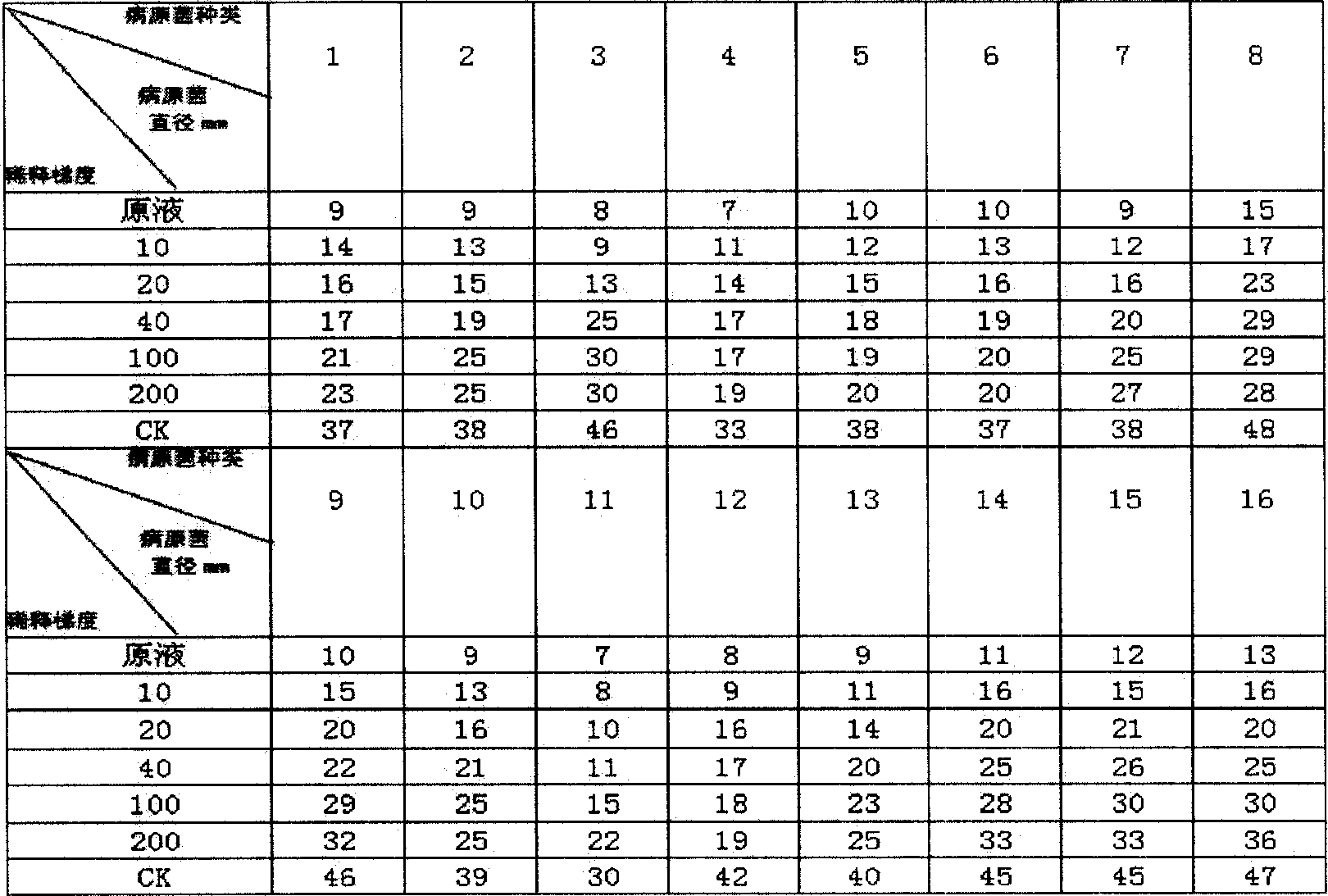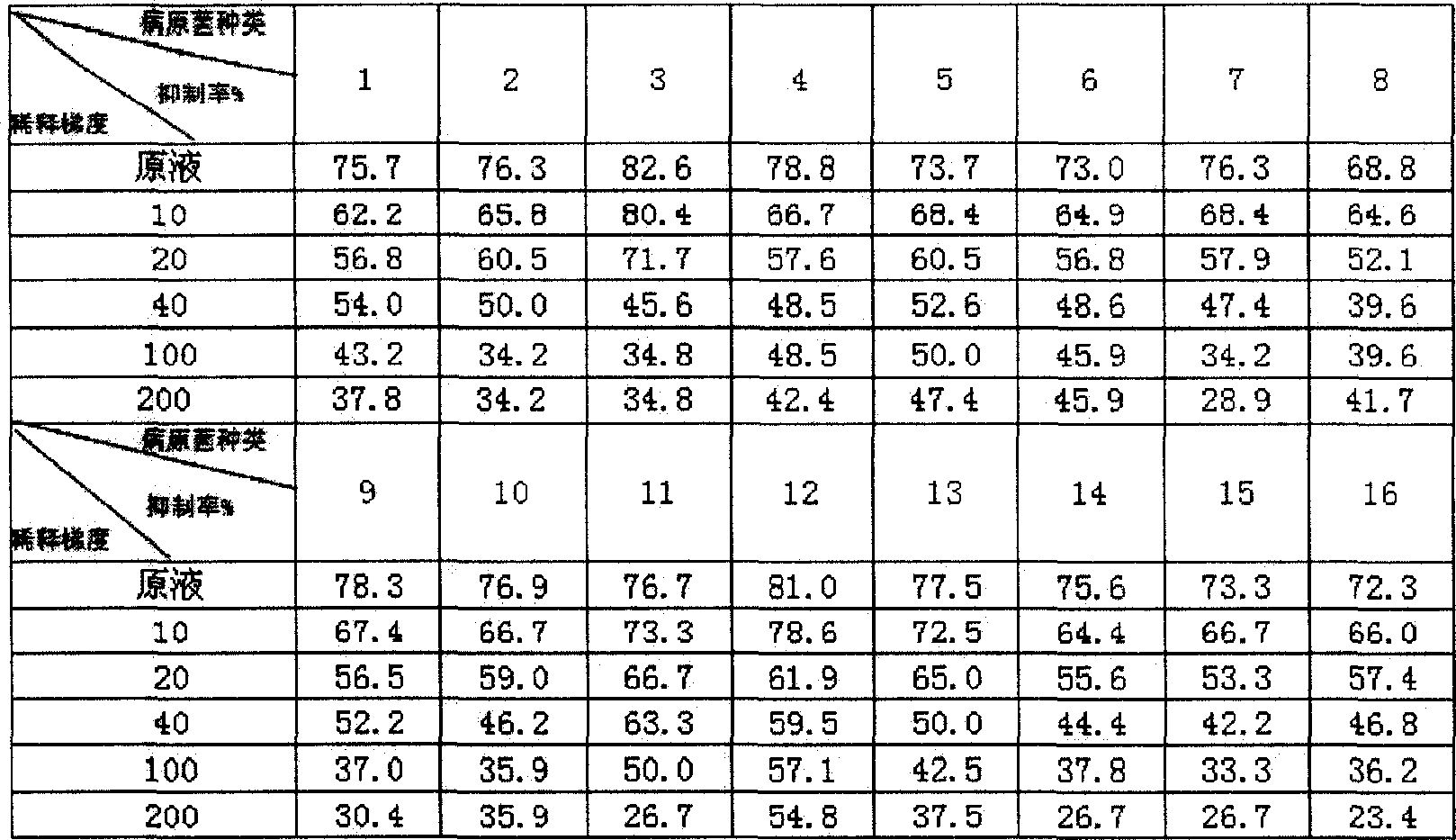Bacillusamyloliquefaciens strain and application thereof
A technology of amylolytic spores and bacillus, applied in the direction of application, bacteria, biocide, etc., to achieve a strong effect of inhibiting activity
- Summary
- Abstract
- Description
- Claims
- Application Information
AI Technical Summary
Problems solved by technology
Method used
Image
Examples
Embodiment 1
[0020] Isolation and purification of strains
[0021] From the eggplant soil in Anning District, Lanzhou City, Gansu Province, select an appropriate location, take soil samples at 5-20 mm, and isolate bacteria from it by the dilution plate method:
[0022] (1) Preparation of soil dilution: weigh 10 g of soil sample, put it into 100 ml of sterile water, and oscillate on a shaker for 30 min. Set aside to clarify. Aseptically draw 100 μl of the supernatant and add it to 900 μl sterile water, dilute to 10 with sterile water -1 、10 -2 、10 -3 、10 -4 、10 -5 、10 -6 、10 -7 、10 -8 A total of eight concentration gradients.
[0023] (2) Cultivation: add sterilized NA (beef extract 3g, peptone 5g, glucose 10g, yeast extract 1g, agar 15g, distilled water 1000ml, pH 7.0) agar medium cooled to 55~60℃ for each dilution concentration, Made into slabs. Incubate at 30°C in an inverted incubator.
[0024] (3) Picking a single colony: After 3 to 4 days, after the colony grows on the plate...
Embodiment 2
[0029] Identification characteristics of strains
[0030] 1. Bacterial morphology observation and staining reaction
[0031] I7 was inoculated in NA liquid medium and cultured with shaking at constant temperature for a suitable period of time, and then stained for microscopic examination. Including Gram staining (crystal shoxenamide staining method), flagella staining (silver nitrate staining method), capsule staining (wet ink method), spore staining (modified Schaeffer-Fulton's staining method).
[0032] Staining results: I7 is rod-shaped bacteria, G + Sex; flagella grow laterally, with 8 to 20 flagella growing on each cell, the length of which is about 2 to 3 times that of the cell; capsulated; spore-forming, mesozoic, and swollen cysts.
[0033] 2. Effects of environmental factors on strain I7
[0034] 2.1 O 2 Effect on strain I7
[0035] Determination of O by the deep agar method 2 For the effect on the growth of I7, insert I7 into a test tube containing glucose beef...
Embodiment 3
[0080] Preparation of cell-free culture medium of strain I7
[0081] ① Inoculate I7 in 25ml small amount of NA liquid medium (pH7.0) at the ratio of 1:100, 120rpm / min, 30°C, shake culture for 24h;
[0082] ② Then inoculate the above-mentioned culture solution into 1000ml large amount of NA liquid medium (pH7.0) at a ratio of 1:20, culture at 120rpm / min, 30°C, and shake for 72h;
[0083] ③ Centrifuge the fermented liquid at 8000-12000r / min to get the supernatant, and the collected supernatant is filtered through a bacterial filter (0.22μm) to obtain a concentrated solution, which is spread on a flat plate, and no viable bacteria are detected. That is, I7 cell-free culture medium.
PUM
 Login to View More
Login to View More Abstract
Description
Claims
Application Information
 Login to View More
Login to View More - R&D
- Intellectual Property
- Life Sciences
- Materials
- Tech Scout
- Unparalleled Data Quality
- Higher Quality Content
- 60% Fewer Hallucinations
Browse by: Latest US Patents, China's latest patents, Technical Efficacy Thesaurus, Application Domain, Technology Topic, Popular Technical Reports.
© 2025 PatSnap. All rights reserved.Legal|Privacy policy|Modern Slavery Act Transparency Statement|Sitemap|About US| Contact US: help@patsnap.com



